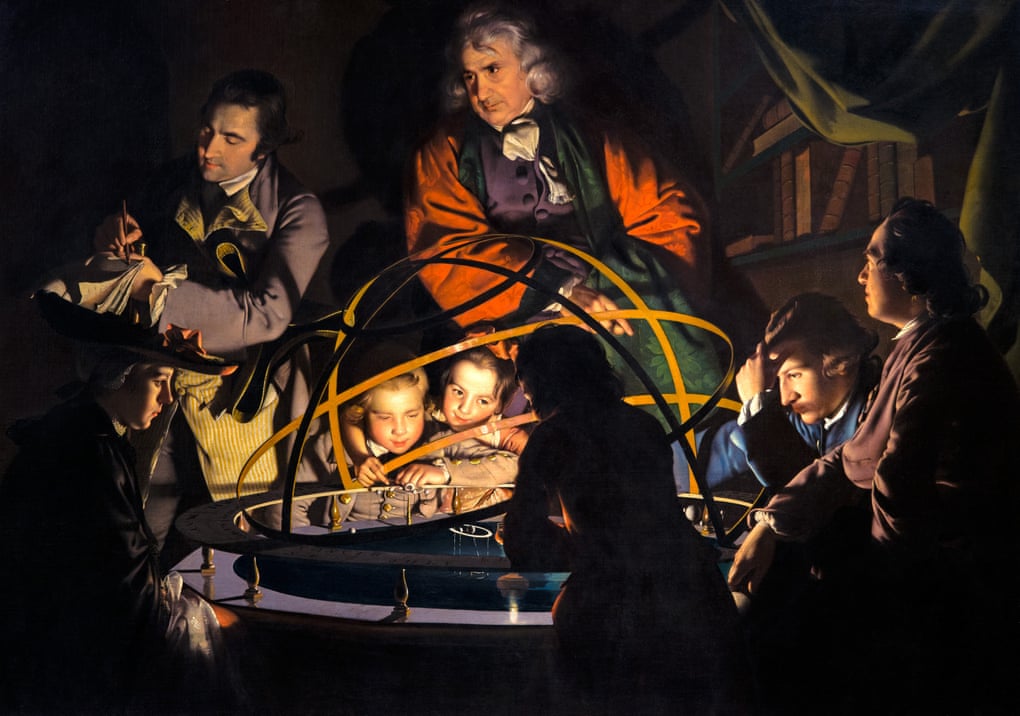“A painting so great, and so strange”
Laura Cummings’s review of the Derby Museum in England for the Guardian is the sort of review that makes me want to look up plane and train schedules:
There is a painting so great, and so strange, in the city of Derby as to be worth the visit to the gallery alone. It shows a group of spectators gathered in deep darkness round a clockwork model of the solar system. Their faces are illuminated only by an invisible source: the hidden lamp that stands in for the sun. . . .
Joseph Wright’s A Philosopher Giving That Lecture on the Orrery (1766) has pride of place in Derby Museum and Art Gallery, as it should. During his life and long after his death, Wright (1734-97) was chiefly known for two things: having his name infrangibly bound to the Midlands town of his birth, and being Britain’s best painter of candlelight. . . .
Today’s museum feels uniquely intimate. Here is [Richard] Arkwright, and then a painting of his cotton mill, where the 12-hour shifts ran right through the night; and then a clock designed by John Whitehurst to record the running time of machines alongside standard time, on two dials; and then Wright’s portrait of Whitehurst.
Here too is the 120,000-year-old hippo found in a Derby suburb; the Roman dice discovered beneath the ring road; the pigeon King of Rome, which broke all speed records racing 1,001 miles back home from Italy in 1913. And all of this appears alongside French revolutionary shoes, Cycladic figures, samurai armour, Egyptian mummies and dinosaurs that children can touch.
All this place needs, as the gallery prepares to show 400 of Wright’s lithe and animate drawings in 2024, alongside his painted masterpieces, is a massive dose of money (come on, plutocrats) to lift its premises and presentation up to the standards of its Enlightenment stars. Then Derby Museum and Art Gallery can be what it ought to be, a miniature rival to the British Museum, without all the stealing.



